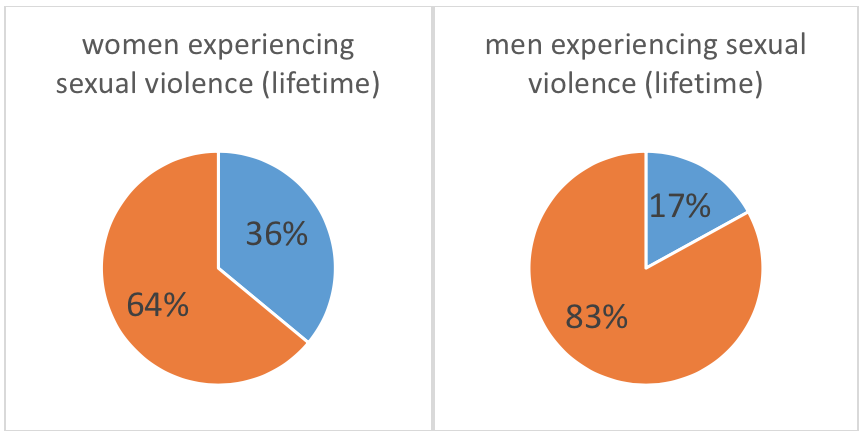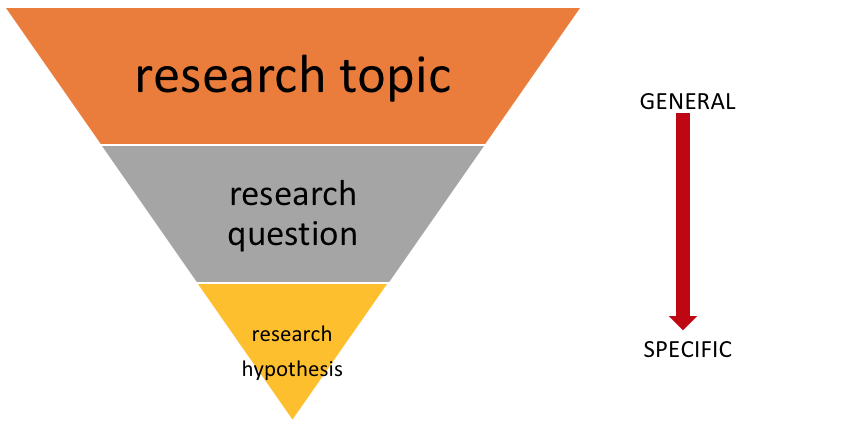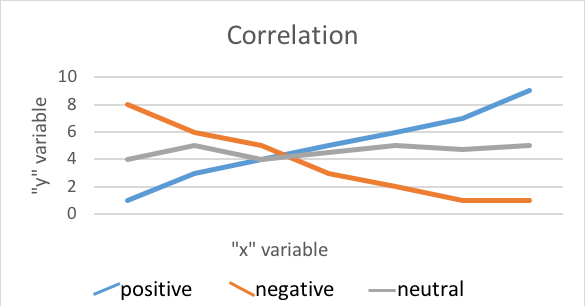Module 2 Chapter 1: The Nature of Social Work Research Questions
The search for empirical evidence typically begins with a question or hypothesis. The nature of the questions asked determine many features of the studies that lead to answers: the study approach, design, measurement, participant selection, data collection, data analysis, and reporting of results. Not just any type of question will do, however:
“When the question is poorly formulated, the design, analysis, sample size calculations, and presentation of results may not be optimal. The gap between research and clinical practice could be bridged by a clear, complete, and informative research question” (Mayo, Asano, & Barbic, 2013, 513).
The topic concerning the nature of social work research questions has two parts: what constitutes a researchquestion, and what makes it a social workquestion. We begin this chapter by examining a general model for understanding where different types of questions fit into the larger picture of knowledge building explored in Module 1. We then look at research questions and social work questions separately. Finally, we reassemble them to identify strong social work research questions.
In this chapter, you will learn:
- 4 types of social work research for knowledge building,
- characteristics of research questions,
- characteristics of social work research questions.
Translational Science
The concept of translational scienceaddresses the application of basic science discoveries and knowledge to routine professional practice. In medicine, the concept is sometimes described as “bench to trench,” meaning that it takes what is learned at the laboratory “bench” to practitioners’ work in the real-world, or “in the trenches.” This way of thinking is about applied science—research aimed at eventual applications to create or support change. Figure 1-1 assembles the various pieces of the translational science knowledge building enterprise:
Figure 1-1. Overview of translational science elements

Basic Research. Federal policy defines basic research as systematic study that is directed toward understanding the fundamental aspects of phenomena without specific applications in mind (adapted from 32 CFR 272.3). Basic research efforts are those designed to describe something or answer questions about its nature. Basic research in social and behavioral science addresses questions of at least two major types: epidemiology and etiology questions.
Epidemiology questions.Questions about the nature of a population, problem, or social phenomenon are often answered through epidemiological methods. Epidemiology is the branch of science (common in public health) for understanding how a problem or phenomenon is distributed in a population. Epidemiologists also ask and address questions related to the nature of relationships between problems or phenomena—such as the relationship between opioid misuse and infectious disease epidemics (NAS, 2018). One feature offered by epidemiological research is a picture of trends over time. Consider, for example, epidemiology data from the Centers for Disease Control and Prevention (the CDC) regarding trends in suicide rates in the state of Ohio over a four-year period (see Figure 1-2, created from data presented by CDC WONDER database).
Figure 1-2. Graph reflecting Ohio trend in suicide rate, 2012-2016

Since the upward trend is of concern, social workers might pursue additional questions to examine possible causes of the observed increases, as well as what the increase might mean to the expanded need for supportive services to families and friends of these individuals. The epidemiological data can help tease out some of these more nuanced answers. For example, epidemiology also tells us that firearms were the recorded cause in 46.9% of known suicide deaths among individuals aged 15-24 years across the nation during 2016 (CDC, WONDER database). Not only do we now know the numbers of suicide deaths in this age group, we know something about a relevant factor that might be addressed through preventive intervention and policy responses.
Epidemiology also addresses questions about the size and characteristics of a population being impacted by a problem or the scope of a problem. For example, a social worker might have a question about the “shape” of a problem defined as sexual violence victimization. Data from the United States’ 2010-2012 National Intimate Partner and Sexual Violence Survey (NISVS) indicated that over 36% of woman (1 in 3) and 17% of men (1 in 6) have experienced sexual violence involving physical contact at some point in their lives; the numbers vary by state, from 29.5% to 47.5% for women and 10.4% to 29.3% for men (Smith et al., 2017).

In developing informed responses to a problem, it helps to know for whom it is a problem. Practitioners, program administrators, and policy decision makers may not be aware that the problem of sexual violence is so prevalent, or that men are victimized at worrisome rates, as well as women. It is also helpful to know how the problem of interest might interface with other problems. For example, the interface between perpetrating sexual assault and alcohol use was examined in a study of college men (Testa & Cleveland, 2017). The study investigators determined that frequently attending parties and bars was associated with a greater probability of perpetrating sexual assault. Thus, epidemiological research helps answer questions about the scope and magnitude of a problem, as well as how it relates to other issues or factors, which can then inform next steps in research to address the problem.
Etiology questions. Etiology research tests theories and hypotheses about the origins and natural course of a problem or phenomenon. This includes answering questions about factors that influence the appearance or course of a problem—these may be factors that mediate or moderate the phenomenon’s development or progression (e.g., demographic characteristics, co-occurring problems, or other environmental processes). To continue with our intimate partner violence example, multiple theories are presented in the literature concerning the etiology of intimate partner violence perpetration—theories also exist concerning the etiology of being the target of intimate partner violence (Begun, 2003). Perpetration theories include:
- personality/character traits
- biological/hereditary/genetic predisposition
- social learning/behavior modeling
- social skills
- self-esteem
- cultural norms (Begun, 2003, p. 642).
Evidence supporting each of these theories exists, to some degree; each theory leads to the development of a different type of prevention or intervention response. The “best” interventions will be informed by theories with the strongest evidence or will integrate elements from multiple evidence-supported theories.
Etiology research is often about understanding the mechanisms underlying the phenomena of interest. The questions are “how” questions—how does this happen (or not)? For example, scientists asked the question: how do opioid medications (used to manage pain) act on neurons compared to opioids that naturally occur in the brain (Stoeber et al., 2018)? They discovered that opioid medications used to treat pain bind to receptors insiden erve cells, which is a quite different mechanism than the conventional wisdom that they behave the same way that naturally occurring (endogenous) opioids do—binding only on the surface of nerve cells. Understanding this mechanism opens new options for developing pain relievers that are less- or non-addicting than current opioid medicines like morphine and oxycodone. Once these mechanisms of change are understood, interventions can be developed, then tested through intervention research approaches.
Intervention Research. Interventions are designed around identified needs: epidemiology research helps to support intervention design by identify the needs. Epidemiology research also helps identify theories concerning the causes and factors affecting social work problems. Intervention development is further supported by later theory-testing and etiology research. However, developing an intervention is not sufficient: interventions need to be tested and evaluated to ensure that they are (1) safe, (2) effective, and (3) cost-efficient to deliver. This is where intervention research comes into play. Consider the example of Motivational Interviewing (MI) approaches to addressing client ambivalence about engaging in a behavior change effort. Early research concerning MI addressed questions about its effectiveness. For example, a meta-analytic review reported that “MI should be considered as a treatment for adolescent substance abuse” because the evidence demonstrated small, but significant effect sizes, and that the treatment gains were retained over time (Jensen et al., 2011). Subsequently, when its safety and effectiveness were consistently demonstrated through this kind of evidence, investigators assessed MI as cost-efficient or cost-effective. For example, MI combined with providing feedback was demonstrated to be cost-effective in reducing drinking among college students who engaged in heavy drinking behavior (Cowell et al., 2012).
Intervention research not only is concerned with the outcomes of delivering an intervention, but may also address the mechanisms of change through which an intervention has its effects—not only what changes happen, but how they happen. For example, investigators are exploring how psychotherapy works, moving beyond demonstrating that it works (Ardito & Rabellino, 2011; Kazdin, 2007; Wampold, 2015). One mechanism that has garnered attention is the role of therapeutic alliance—the relationships, bonds, and interactions that occur in the context of treatment—on treatment outcomes.

Therapeutic alliance is one common factor identified across numerous types of effective psychotherapeutic approaches (Wampold, 2015). Authors summarizing a number of studies about therapeutic alliance and its positive relationship to treatment outcomes concluded that the quality of therapeutic alliance may be a more powerful predictor of positive outcome than is the nature or type of intervention delivered (Ardito & Rabellino, 2011). However, it is important to determine the extent to which (a) therapeutic alliance enhances clients’ symptom improvement, (b) gradual improvements in symptoms lead to enhanced therapeutic alliance, or (c) the relationship between therapeutic alliance and symptom improvement are iterative—they go back and forth, influencing each other over time (Kazdin, 2007).
Implementation Science. Social work and other disciplines have produced a great deal of evidence about “what works” for intervening around a great number of social work problems. Unfortunately, many best practices with this kind of evidence support are slow to become common practices. Implementation science is about understanding facilitators and barriers to these evidence-supported interventions becoming adopted into routine practice: characteristics of the interventions themselves, conditions and processes operating in the organizations where interventions are implemented, and factors external to these organizations all influence practitioners’ adoption of evidence supported interventions.
Even under optimal internal organizational conditions, implementation can be undermined by changes in organizations’ external environments, such as fluctuations in funding, adjustments in contracting practices, new technology, new legislation, changes in clinical practice guidelines and recommendations, or other environmental shifts” (Birken, et al, 2017).
Research for/about Research. In addition, social work investigators engage in research that is specifically about scientific methodology. This is where advances in measurement, participant recruitment and retention, and data analysis emerge. The results of these kinds of research studies are used to improve the research in basic, intervention, and implementation research. Later in the course you will see some of these products in action as we learn about best practices in research and evaluation methodology. Here are a few examples related to measurement methods:
- Concept mapping to assess community needs of sexual minority youth (Davis, Saltzburg, & Locke, 2010)
- Field methodologies for measuring college student drinking in natural environments (Clapp et al., 2007)
- Intergenerational contact measurement (Jarrott, Weaver, Bowen, & Wang, 2018)
- Perceived Social Competence Scale-II (Anderson-Butcher et al., 2016)
- Safe-At-Home Instrument to measure readiness to change intimate partner violence behavior (Begun et al., 2003; 2008; Sielski, Begun, & Hamel, 2015)
- Teamwork Scale for Youth (Lower, Newman, & Anderson-Butcher, 2016)
And, here are a few examples related to involving participants in research studies:
- Conducting safe research with at risk populations (Kyriakakis, Waller, Kagotho, & Edmond, 2015)
- Recruitment strategies for non-treatment samples in addiction studies (Subbaraman et al., 2015)
- Variations in recruitment results across Internet platforms (Shao et al., 2015)

Take a moment to complete the following activity.
Research Questions
In this section, we take a closer look at research questions and their relationship to the types of research conducted by investigators. It may be easier to understand research questions by first ruling out what are notresearch questions. In that spirit, let’s begin with examples of questions where applying research methods will not help to find answers:
- Trauma informed education.The first issue with this example is obvious: it is not worded as a question. The second is critically important: this is a general topic, it is not a research question. This topic is too vague and broad making it impossible to determine what answers would look like or how to approach finding answers.
- How is my client feeling about what just happened?This type of question about an individual is best answered by asking clinical questions of that individual, within the context of the therapeutic relationship, not by consulting research literature or conducting a systematic research study.
- Will my community come together in protest of a police-involved shooting incident?This type of question may best be answered by waiting to see what the future brings. Research might offer a guess based on data from how other communities behaved in the past but cannot predict how groups in individual situations will behave. A better research question might be: What factors predict community protest in response to police-involved shooting incidents?
- Should I order salad or soup to go with my sandwich?This type of question is not of general interest, making it a poor choice as a research question. The question might be reframed as a general interest question: Is it healthier to provide salad or soup along with a sandwich? The answer to that researchable question might inform a personal decision.
- Why divorce is bad for children.There are two problems with this example. First, it is a statement, not a question, despite starting with the word “why.” Second, this question starts out with a biased assumption—that divorce isbad for children. Research questions should support unbiased investigation, leading to evidence and answers representative of what exists rather than what someone sets out wanting to prove is the case. A better research question might be: How does divorce affect children?

Tuning back to our first example of what is not a research question, consider several possible school social work research questions related to that general topic:
- To what extent do elementary school personnel feel prepared to engage in trauma informed education with their students?
- What are the barriers and facilitators of integrating trauma informed education in middle school?
- Does integrating trauma informed education result in lower rates of suicidal ideation among high school students?
- Is there a relationship between parent satisfaction and the implementation of trauma informed education in their children’s schools?
- Does implementing trauma informed education in middle schools affect the rate of student discipline referrals?
What is the difference between these research questions and the earlier “not research” questions? First, research questions are specific. This is an important distinction between identifying a topic of interest (e.g., trauma informed education) and asking a researchable question. For example, the question “How does divorce affect children?” is not a good research question because it remains too broad. Instead, investigators might focus their research questions on one or two specific effects of interest, such as emotional or mental health, academic performance, sibling relationships, aggression, gender role, or dating relationship outcomes.

Related to a question being “researchable” is its feasibility for study. Being able to research a question requires that appropriate data can be collected with integrity. For example, it may not be feasible to study what would happen if every child was raised by two parents, because (a) it is impossible to study every child and (2) this reality cannot ethically be manipulated to systematically explore it. No one can ethically conduct a study whereby children are randomly assigned by study investigators to the compared conditions of being raised by two parents versus being raised by one or no parents. Instead, we settle for observing what has occurred naturally in different families.
Second, “good” research questions are relevant to knowledge building. For this reason, the question about what to eat was not a good research question—it is not relevant to others’ knowledge development. Relevance is in the “eye of the beholder,” however. A social work researcher may not see the relevance of using a 4-item stimulus array versus a 6-item stimulus array in testing children’s memory, but this may be an important research question for a cognitive psychology researcher. It may, eventually, have implications for assessment measures used in social work practice.

Third, is the issue of bias built into research questions. Remembering that investigators are a product of their own developmental and social contexts, what they choose to study and how they choose to study it are socially constructed. An important aspect at the heart of social work research relates to a question’s cultural appropriateness and acceptability. To demonstrate this point, consider an era (during the 1950s to early 1970s) when research questions were asked about the negative effects on child development of single-parent, black family households compared to two-parent, white family households in America. This “majority comparison” frame of reference is not culturally appropriate or culturally competent. Today, in social work, we adopt a strengths perspective, and avoid making comparisons of groups against a majority model. For example, we might ask questions like: What are the facilitators and barriers of children’s positive development as identified by single parents of diverse racial/ethnic backgrounds? What strengths do African American parents bring to the experience of single-parenting and how does it shape their children’s development? What are the similar and different experiences of single-parenting experienced by families of different racial/ethnic composition?

Research Questions versus Research Hypotheses. You have now seen examples of “good” research questions. Take, for example, the last one we listed about trauma informed education:
Does implementing trauma informed education in middle schools affect the rate of student discipline referrals?
Based on a review of literature, practice experience, previous research efforts, and the school’s interests, an investigator may be prepared to be even more specific about the research question (see Figure 1-3). Assume that these sources led the investigator to believe that implementing the trauma informed education approach will have the effect of reducing the rate of disciplinary referrals. The investigator may then propose to test the following hypothesis:
Implementing trauma informed education in middle schools will result in a reduction in the number of student discipline referrals.
The research hypothesis is a clear statement that can be tested with quantitative data and will either be rejected or not, depending on the evidence. Research hypotheses are predictions about study results—what the investigator expects the results will show. The prediction, or hypothesis, is based on theory and/or other evidence. A study hypothesis is, by definition, quantifiable—the answer lies in numerical data, which is why we do not generally see hypotheses in qualitative, descriptive research reports.
Hypotheses are also specific to one question at a time. Thus, an investigator would need to state and test a second hypothesis to answer the question:
Is there a relationship between parent satisfaction and the implementation of trauma informed education in their children’s schools?
The stated hypothesis might be:
Parent satisfaction is higher in middle schools where trauma informed education is implemented.
Figure 1-3. Increasing specificity from research topic to question to hypothesis


Take a moment to complete the following activity.
Social Work Questions
It is difficult to find a simple way to characterize social work research. The National Institutes of Health (NIH) described social work research in the following way:
Historically, social work research has focused on studies of the individual, family, group, community, policy and/or organizational level, focusing across the lifespan on prevention, intervention, treatment, aftercare and rehabilitation of acute and chronic conditions, including the effects of policy on social work practice (OBSSR, 2003, p. 5).
For all the breadth expressed in this statement, it reflects only how social work research relates to the health arena—it does not indicate many other domains and service delivery systems of social work influence:
- physical, mental, and behavioral health
- substance misuse/addiction and other addictive behaviors
- education
- workplace
- income/poverty
- criminal justice
- child and family welfare
- housing and food security/insecurity
- environmental social work
- intimate partner, family, and community violence
- and others.
In addition to breadth of topic, social work research is characterized by its biopsychosocial nature. This means that social work researchers not only pursue questions relating to biological, psychological, and social context factors, but also questions relating to their intersections and interactions. Related to this observation is that social work not only addresses questions related to the multiple social system levels, social work also addresses the ways multiple levels intersect and interact (i.e., those levels represented in the NIH statement about individuals, families, groups, communities, organizations, and policy).
It is worth noting that research need not be conducted by social workers to be relevant to social work–many disciplines and professions contribute to the knowledge base which informs social work practice (medicine, nursing, education, occupational therapy, psychology, sociology, criminal justice, political science, economics, and more). Authors of one social work research textbook summarize the relevance issue in the following statement:
“To social workers, a relevant research question is one whose answers will have an impact on policies, theories, or practices related to the social work profession” (Grinnell & Unrau, 2014, p. 46).
Social Work Research Questions and Specific Aims
The kinds of questions that help inform social work practice and policy are relevant to understanding social work problems, diverse populations, social phenomena, or interventions. Most social work research questions can be divided into two general categories: background questions and foreground questions. The major distinction between these two categories relates to the specific aims that emerge in relation to the research questions.
Background Questions. This type of question is answerable with a fact or set of facts. Background questions are generally simple in structure, and they direct a straightforward search for evidence. This type of question can usually be formulated using the classic 5 question words: who, what, when, where, or why. Here are a few examples of social work background questions related to the topic of fetal alcohol exposure:
- Whois at greatest risk of fetal alcohol exposure?
- Whatare the developmental consequences of fetal alcohol exposure?
- Whenin gestation is the risk of fetal alcohol exposure greatest?
- Wheredo women get information about the hazards of drinking during pregnancy?
- Whyis fetal alcohol exposure (FAE) presented as a spectrum disorder, different from fetal alcohol syndrome (FAS)?
These kinds of questions direct a social worker to review literature about human development, human behavior, the distribution of the problem across populations, and factors that determine the nature of a specific social work problem like fetal exposure to alcohol. Where the necessary knowledge is lacking, investigators aim to explore or describe the phenomenon of interest. Many background questions can be answered by epidemiology or etiology evidence.

Foreground Questions. This type of question is more complex than the typical background question. Foreground questions typically are concerned with making specific choices by comparing or evaluating options. These types of questions required more specialized evidence and may lead to searching different types of resources than would be helpful for answering background questions. Foreground questions are dealt with in greater detail in our second course, SWK 3402 which is about understanding social work interventions. A quick foreground question example related to the fetal exposure to alcohol topic might be:
Which is the best tool for screening pregnant women for alcohol use with the aim of reducing fetal exposure, the T-ACE, TWEAK, or AUDIT?
This type of question leads the social worker to search for evidence that compares different approaches. These kinds of evidence are usually found in comparative reviews, or require the practitioner to conduct a review of literature, locating individual efficacy and effectiveness studies. Where knowledge is found to be lacking, investigators aim to experiment with different approaches or interventions.
Three Question Types and Their Associated Research Aims
Important distinctions exist related to different types of background questions. Consider three general categories of questions that social workers might ask about populations, problems, and social phenomena: exploratory, descriptive, and explanatory. The different types of questions matter because the nature of the research questions determines the specific aims and most appropriate research approaches investigators apply in answering them.
Exploratory Research Questions.Social workers may find themselves facing a new, emerging problem where there is little previously developed knowledge available—so little, in fact, that it is premature to begin asking any more complex questions about causes or developing testable theories. Exploratory research questionsopen the door to beginning understanding and are basic; answers would help build the foundation of knowledge for asking more complex descriptive and explanatory questions. For example, in the early days of recognition that HIV/AIDS was emerging as a significant public health problem, it was premature to jump to questions about how to treat or prevent the problem. Not enough was known about the nature and scope of the problem, for whom it was a problem, how the problem was transmitted, factors associated with risk for exposure, what factors influenced the transition from HIV exposure to AIDS as a disease state, and what issues or problems might co-occur along with either HIV exposure or AIDS. In terms of a knowledge evolution process, a certain degree of exploration had to occur before intervention strategies for prevention and treatment could be developed, tested, and implemented.

In 1981, medical providers, public health officials, and the Centers for Disease Control and Prevention (CDC) began to circulate and publish observations about a disproportionate, unexpectedly high incidence rate of an unusual pneumonia and Kaposi’s sarcoma appearing in New York City and San Francisco/California among homosexual men (Curran, & Jaffe, 2011). As a result, a task force was formed and charged with conducting an epidemiologic investigation of this outbreak; “Within 6 months, it was clear that a new, highly concentrated epidemic of life threatening illness was occurring in the United States” (Curran & Jaffe, 2011, p. 65). The newly recognized disease was named for its symptoms: acquired immune deficiency syndrome, or AIDS. Exploratory research into the social networks of 90 living patients in 10 different cities indicated that 40 had a sexual contact link with another member of the 90-patient group (Auerbach, Darrow, Jaffe, & Curran, 1984). Additionally, cases were identified among persons who had received blood products related to their having hemophilia, persons engaged in needle sharing during substance use, women who had sexual contact with a patient, and infants born to exposed women. Combined, these pieces of information led to an understanding that the causal infectious factor (eventually named the human immunodeficiency virus, HIV) was transmitted by sexual contact, blood, and placental connection. This, in turn, led to knowledge building activities to develop both preventive and treatment strategies which could be implemented and studied. Social justice concerns relate to the slow rate at which sufficient resources were committed for evolving to the point of effective solutions for saving lives among those at risk or already affected by a heavily stigmatized problem.
The exploratory research approaches utilized in the early HIV/AIDS studies were both qualitative and quantitative in nature. Qualitative studies included in-depth interviews with identified patients—anthropological and public health interviews about many aspects of their living, work, and recreational environments, as well as many types of behavior. Quantitative studies included comparisons between homosexually active men with and without the diseases of concern. In addition, social network study methods combined qualitative and quantitative approaches. These examples of early exploratory research supported next steps in knowledge building to get us to where we are today. “Today, someone diagnosed with HIV and treated before the disease is far advanced can live nearly as long as someone who does not have HIV” (hiv.gov). While HIV infection cannot (yet) be “cured,” it can be controlled and managed as a chronic condition.
Descriptive Research Questions. Social workers often ask for descriptions about specific populations, problems, processes, or phenomena. Descriptive research questions might be expressed in terms of searching to create a profile of a group or population, create categories or types (typology) to describe elements of a population, document facts that confirm or contradict existing beliefs about a topic or issue, describe a process, or identify steps/stages in a sequential process (Grinnell & Unrau, 2014). Investigators may elect to approach the descriptive question using qualitative methods that result in a rich, deep description of certain individuals’ experiences or perceptions (Yegidis, Weinbach, & Meyers, 2018). Or, the descriptive question might lead investigators to apply quantitative methods, assigning numeric values, measuring variables that describe a population, process, or situation of interest. In descriptive research, investigators do not manipulate or experiment with the variables; investigators seek to describe what naturally occurs (Yegidis, Weinbach, & Meyers, 2018). As a result of studies answering descriptive questions, tentative theories and hypotheses may be generated.
Here are several examples of descriptive questions.
- How do incarcerated women feel about the option of medication-assisted treatment for substance use disorders?
- What barriers to engaging in substance misuse treatment do previously incarcerated persons experience during community reentry?
- How often do emerging adults engage in binge drinking in different drinking contexts (e.g., bars, parties, sporting events, at home)?
- What percent of incarcerated adults experience a substance use disorder?
- What is the magnitude of racial/ethnic disparities in access to treatment for substance use disorders?
- Who provides supervision or coordination of services for aging adults with intellectual or other developmental disabilities?
- What is the nature of the debt load among students in doctoral social work programs?

An example of descriptive research, derived from a descriptive question, is represented in an article where investigators addressed the question: How is the topic of media violence and aggression reported in print media (Martins et al., 2013)? This question led the investigators to conduct a qualitative content analysis, resulting in a description showing a shift in tone where earlier articles (prior to 2000) emphasized the link as a point of concern and later articles (since 2000) assumed a more neutral stance.
Correlational Research Questions. One important type of descriptive question asks about relationships that might exist between variables—looking to see if variable x and variable y are associated or correlated with each other. This is an example of a correlational research question; it does not indicate whether “x” causes “y” or “y” causes “x”, only whether these two are related. Consider again the topic of exposure to violence in the media and its relationship to aggression. A descriptive question asked about the existence of a relationship between exposure to media violence (variable x) and children’s expression of aggression (variable y). Investigators reported one study of school-aged children, examining the relationship between exposure to three types of media violence (television, video games, and movies/videos) and three types of aggression (verbal, relational, and physical; Gentile, Coyne, & Walsh, 2011). The study investigators reported that media violence exposure was, indeed, correlated with all three types of aggressive behavior (and less prosocial behavior, too).
For a positive correlation (the blue line), as the value of the “x” variable increases, so does the value of the “y” variable (see Figure 1-4 for a general demonstration). An example might be as age or grade in school increases (“x”), so does the number of preadolescent, adolescent, and emerging adults who have used alcohol (“y”). For a negative correlation (the orange line), as the value of the “x” variable increases, the value of the “y” variable decreases. An example might be as the number of weeks individuals are in treatment for depression symptoms (“x”), the reported depression symptoms decreases (“y”). The neutral of non-correlation line (grey) means that the two variables, “x” and “y” do not have an association with each other. For example, number of years of teachers’ education (“x”) might be unrelated to the number of students dropping out of high school (“y”).
Figure 1-4. Depicting positive, negative, and neutral correlation lines

Descriptive correlational studies are sometimes called comparison studies because the descriptive question is answered by comparing groups that differ on one of the variables (low versus high media violence exposure) to see how they might differ on the other variable (aggressive behavior).
Explanatory Research Questions. To inform the design of evidence-informed interventions, social workers need answers to questions about the nature of the relationships between potentially influential factors or variables. An explanatory research question might be mapped as: Does variable x cause, lead to or prevent changes in variable y (Grinnell & Unrau, 2014)? These types of questions often test theory related to etiology.
Comparative research might provide information about a relationship between variables. For example, the difference in outcomes between persons experiencing a substance use disorder and have been incarcerated compared to others with the same problem but have not been incarcerated may be related to their employability and ability to generate a living-wage income for themselves and their families. However, to develop evidence-informed interventions, social workers need to know that variables are not only related, but that one variable actually plays a causal role in relation to the other. Imagine, for example, that evidence demonstrated a significant relationship between adolescent self-esteem and school performance. Social workers might spend a great deal of effort developing interventions to boost self-esteem in hopes of having a positive impact on school performance. However, what if self-esteem comes from strong school performance? The self-esteem intervention efforts will not likely have the desired effect on school performance. Just because research demonstrates a significant relationship between two variables does not mean that the research has demonstrated a causal relationship between those variables. Investigators need to be cautious about the extent to which their study designs can support drawing conclusions about causality; anyone reviewing research reports also needs to be alert to where causal conclusions are properly and improperly drawn.

The questions that drive intervention and evaluation research studies are explanatory in nature: does the intervention (x) have a significant impact on outcomes of interest (y)? Another type of explanatory question related to intervention research concerns the mechanisms of change. In other words, not only might social workers be interested to find out what outcomes or changes can be attributed to an intervention, they may also be interested to learn how the intervention causes those changes or outcomes.


Take a moment to complete the following activity.
Chapter Summary
In this chapter, you learned about different aspects of the knowledge building process and where different types of research questions might fit into the big picture. No single research study covers the entire spectrum; each study contributes a piece of the puzzle as a whole. Research questions come in many different forms and several different types. What is important to recall as we move through the remainder of the course is that the decisions investigators make about research approaches, designs, and procedures all start with the nature of the question being asked. And, the questions being asked are influenced by multiple factors, including what is previously known and remains unknown, the culture and context of the questioners, and what theories they have about what is to be studied. That leads us to the next chapter.
